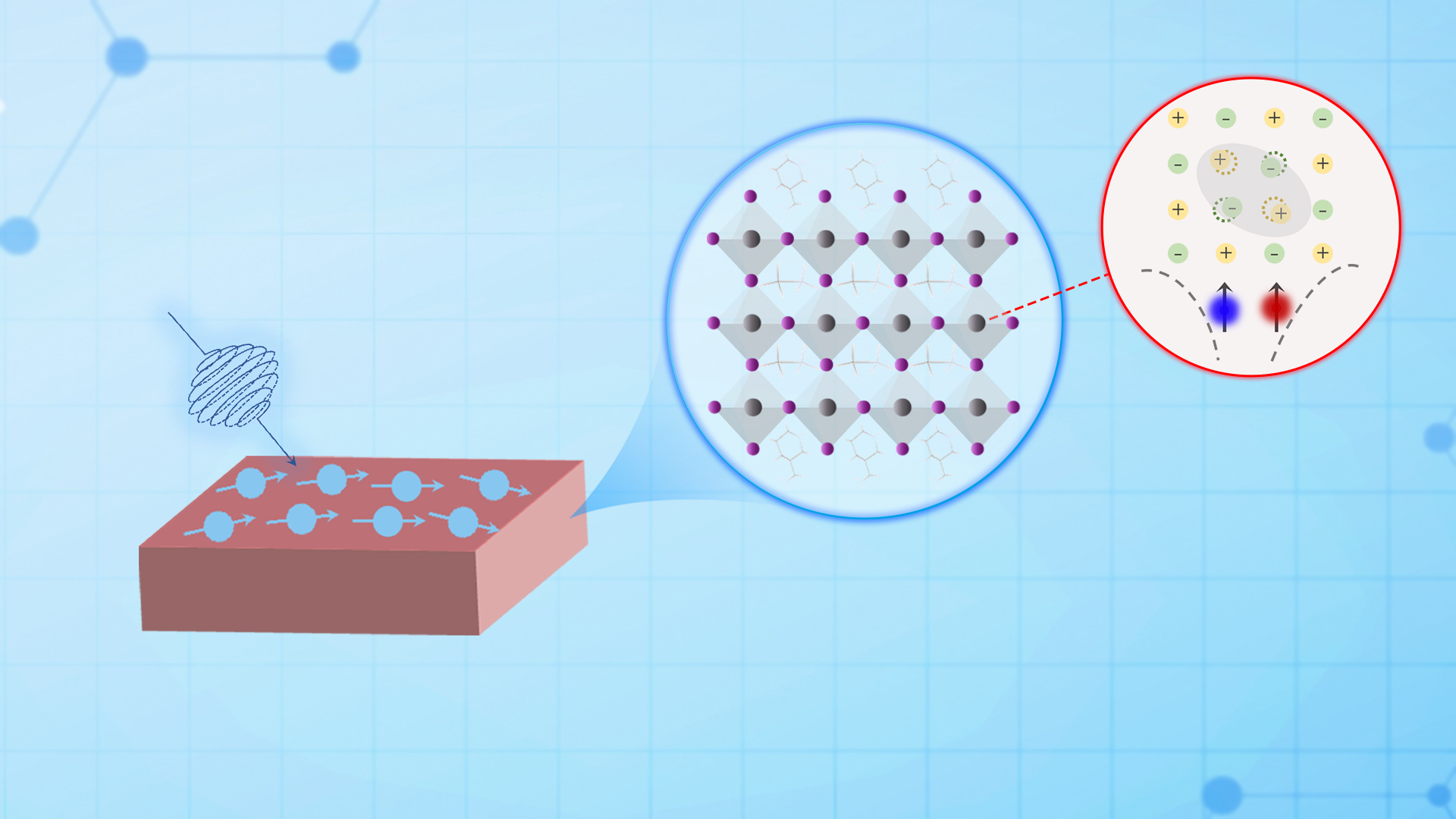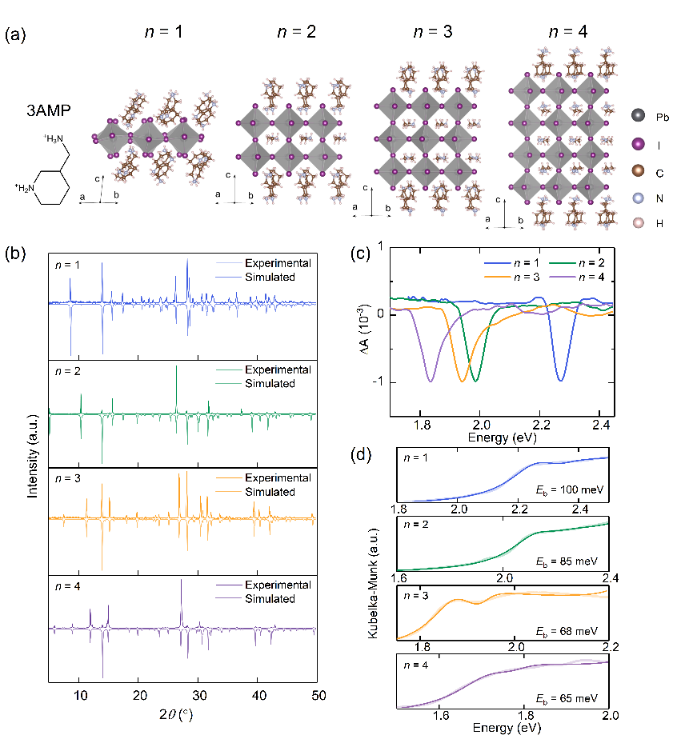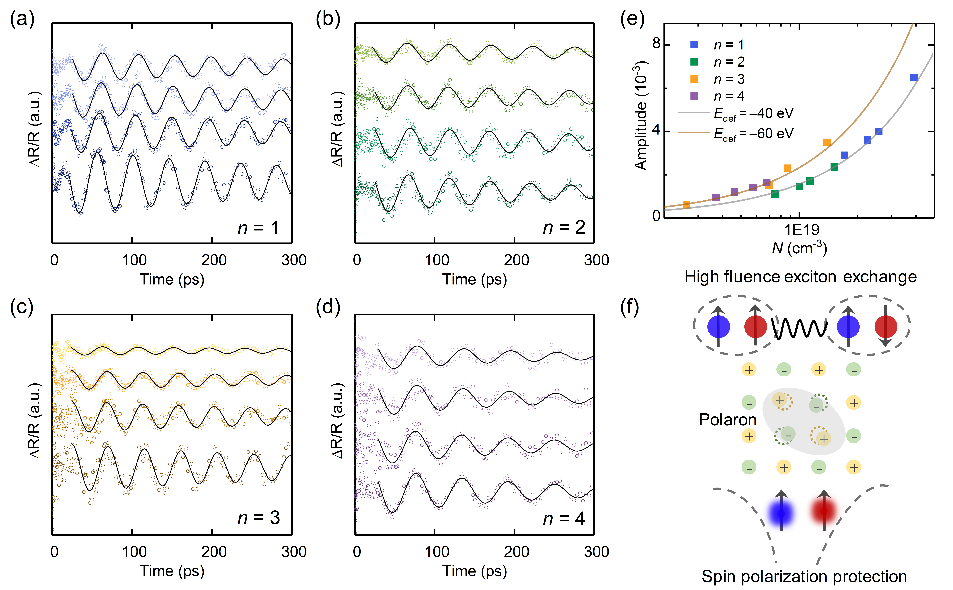In spintronics, slow spin relaxation is of crucial importance. Thus, the search for good spintronic materials has focused on investigating semiconductors that have long spin relaxation times.
Layered metal-halide perovskites represent an emerging class of semiconductors with rich optical spin physics, showing potential for spintronic applications. However, a major hurdle arises in layered metal-halide perovskites with strong spin-orbit coupling, where the spin lifetime becomes extremely short due to D’yakonov-Perel’ scattering and Bir-Aronov-Pikus at high carrier density. The control of spin relaxation mechanisms is of great importance for spintronics applications as well as for fundamental studies. Therefore, an effective way is needed to tune the spin relaxation mechanism.

Associate Professor Xihan Chen’s research group from the Department of Mechanical and Energy Engineering (MEE) at the Southern University of Science and Technology (SUSTech) has recently made important progress in the optimization of the spin dynamics relaxation mechanism in Dion-Jacobson (DJ) phase two-dimensional perovskite. They have revealed that the neutral impurity and polar optical phonon scatterings significantly contributed to the momentum relaxation rate.
Increasing the deformation potential of materials will cause stronger exciton-lattice coupling, which can effectively tune the dominant scattering mechanism and thus protect spin relaxation, especially in structures with higher inorganic layers. This study emphasizes the role of exciton polaron effect in regulating the relaxation mechanism of dominant excitons, and shows the potential of DJ-phase perovskites for spintronic applications.
Their work, entitled “Tuning Spin-Polarized Lifetime at High Carrier Density through Deformation Potential in Dion−Jacobson-Phase Perovskites”, has been published in the Journal of the American Chemical Society.
The researchers introduced layered 2D DJ phase hybrid perovskites (3AMP)(MA)n−1PbnI3n+1 (3AMP = 3-(aminomethyl)piperidinium, n = 1-4), which are like natural quantum wells structure composed of organic layer and inorganic layer. As shown in Figure 1, the optical band gap and exciton binding energy can be modified by changing the perovskite layer thickness.

Figure 1. Crystal structures, XRD patterns, and absorption spectra of (3AMP)(MA)n−1PbnI3n+1 series of samples
The experiments of this work were carried out using a circularly polarized pump-probe transient reflection technique. Due to the spin-related optical transition rule, excitons at the ground state can be selectively excited by right-handed or left-handed circularly polarized pump pulses (Figure 2). The spin dynamics can be detected by using a circularly polarized probe pulse with the same or counter-circular polarization.

Figure 2. Measurement of spin relaxation mechanism
The study also illustrates the different effects of neutral impurities and polar optical phonons on the spin relaxation mechanism. For n = 1 and n = 2The lack of a Coulomb potential for neutral impurities results in a weaker momentum scattering, causing spin lifetime not to decrease at low excitation concentration until the concentration approaches 1018 cm-3, where the polar optical phonons start to show an effect. However, despite a more than 10-fold increase in carrier concentration, the spin lifetimes for n = 3 and 4 are effectively maintained. The polar optical phonon scattering in these materials has been shifted to mixed scattering by neutral impurities and optical phonons, which are responsible for spin protection behavior.

Figure 3. Exciton concentration-dependent spin lifetime
Strong electron-phonon interactions have frequently been discussed regarding their roles in the physical mechanism determining the unique features of halide perovskites. To compare the electron-phonon coupling strength of samples, the researchers conducted ultrafast acoustic transient reflection measurements, which have proven effective in assessing deformation potentials. The above-bandgap optical pumping excites hot electron-hole pairs, which impulsively heat the lattice through electron-phonon coupling and launch the coherent acoustic phonons.
The group found that samples with different inorganic layers have a great influence on the phonon oscillation behavior of the sample, which is mainly related to the distortion of the inorganic layer. The higher deformation potential observed in samples with a higher number of layers can be attributed to their octahedral distortions, as higher distortion implies stronger electron-phonon coupling and a higher deformation potential. Electron-lattice interaction analysis indicates that organic cations and layer number regulation are crucial in achieving control over the structure and electrical properties, highlighting the potential of DJ-phase perovskites for spintronic applications.

Figure 4. Coherent acoustic phonon measurements and deformation potential
Doctoral students Yuling Huang and Congcong Chen from the Department of MEE and the Department of Chemistry at SUSTech, are the first and co-first authors of the paper, respectively. Associate Professor Xihan Chen is the corresponding author, and Professor Lingling Mao from the Department of Chemistry at SUSTech is the co-corresponding author. SUSTech is the sole communication unit of the paper.
This work was supported by the National Natural Science Foundation of China (NSFC), Natural Science Foundation of Guangdong Province, Guangdong Provincial University Science and Technology Program, and the Shenzhen Science and Technology Innovation Commission.
Paper link: https://pubs.acs.org/doi/full/10.1021/jacs.4c03532
To read all stories about SUSTech science, subscribe to the monthly SUSTech Newsletter.
Proofread ByAdrian Cremin, Yingying XIA
Photo ByDepartment of Mechanical and Energy Engineering